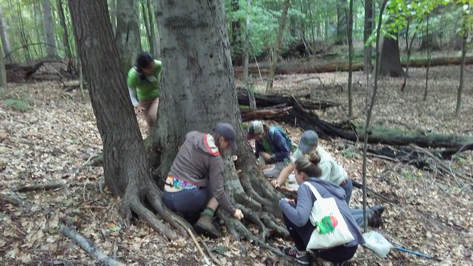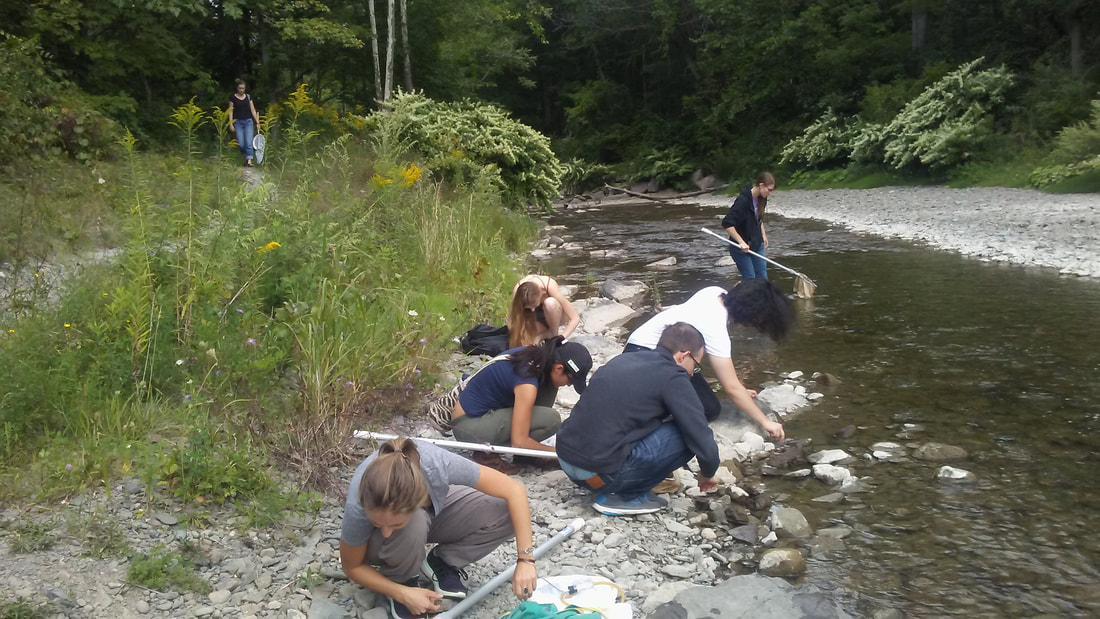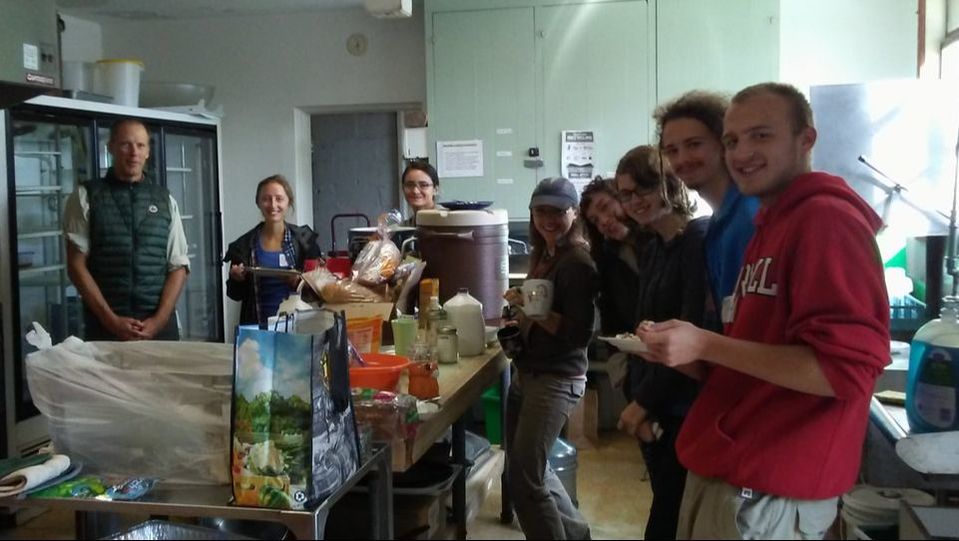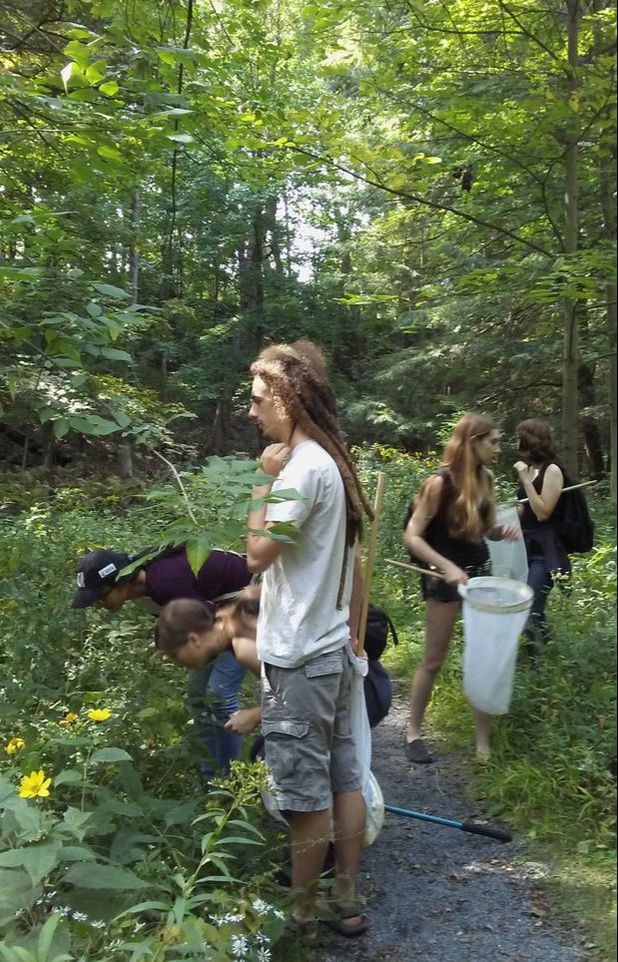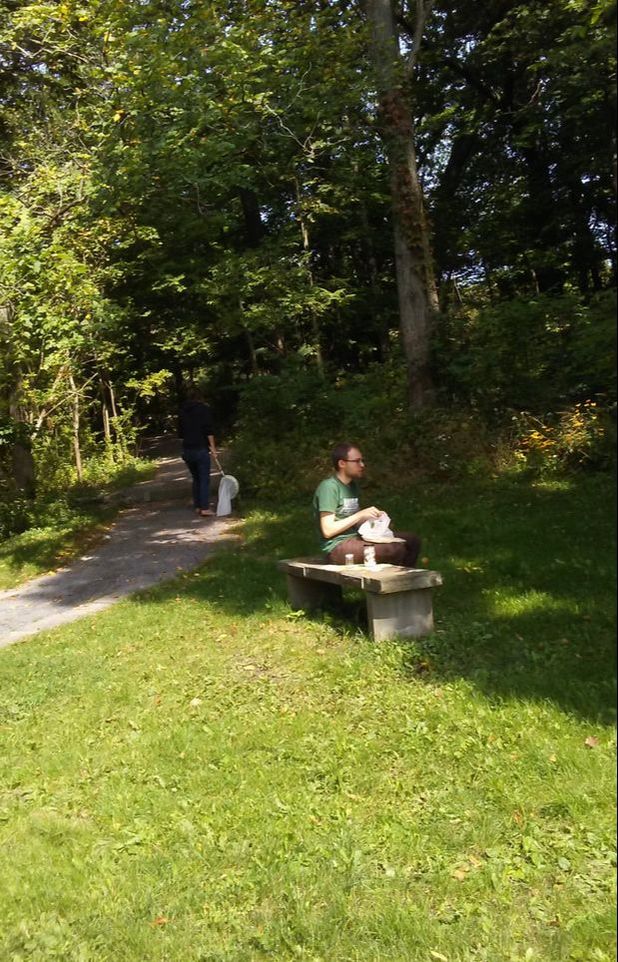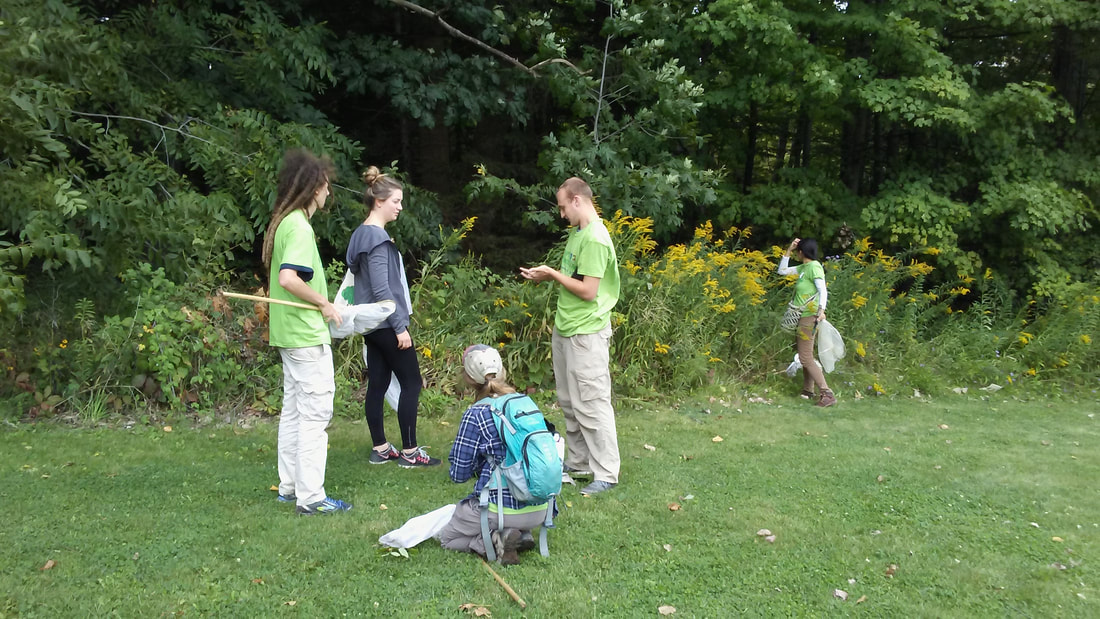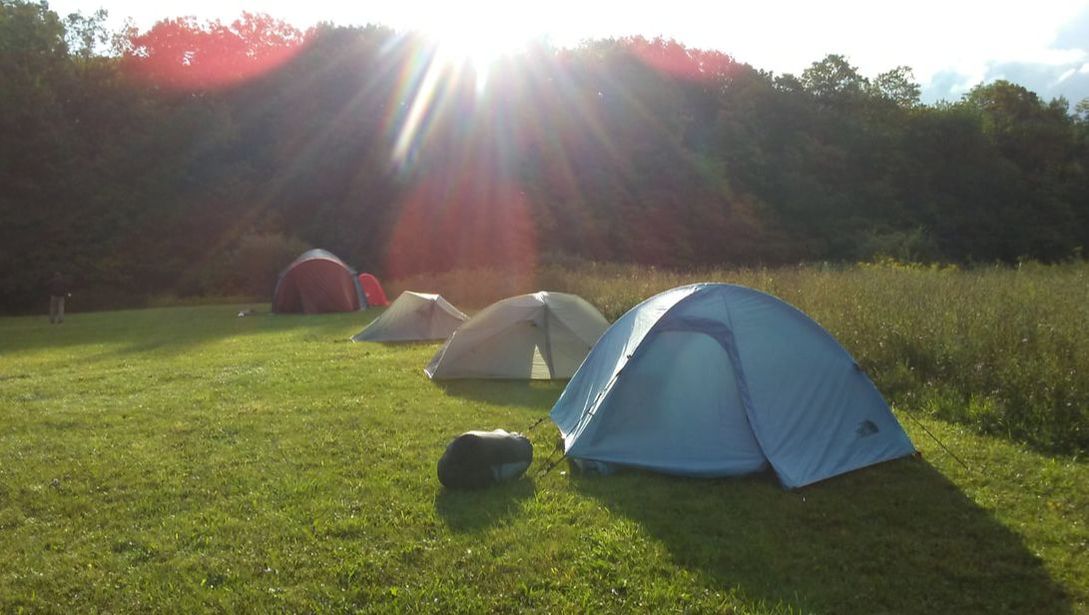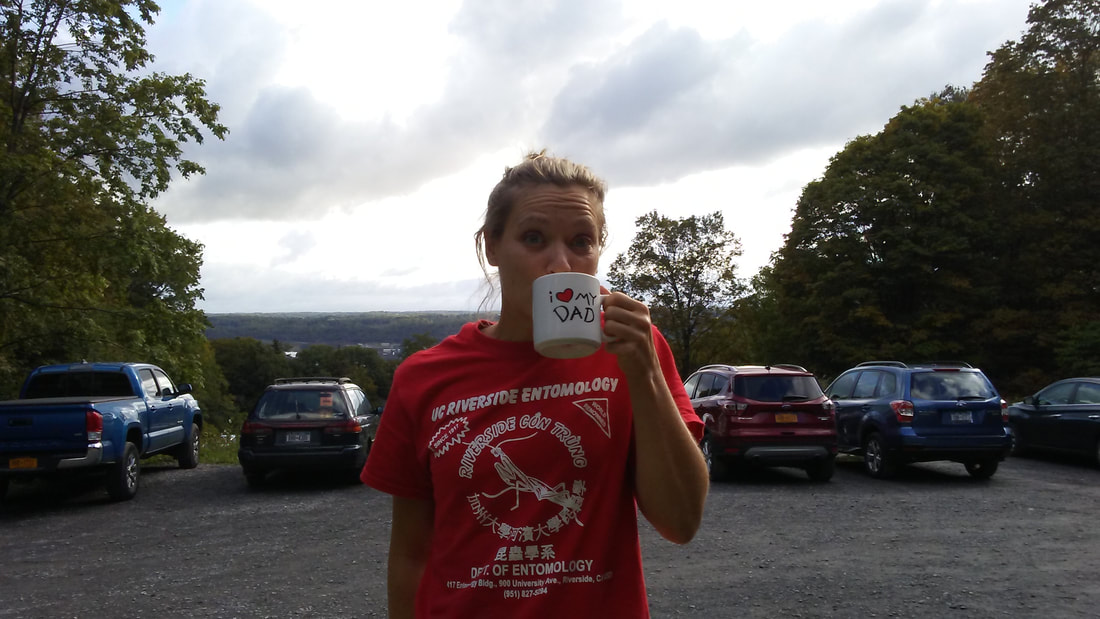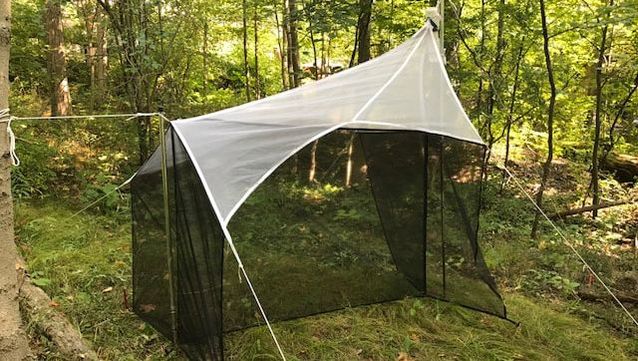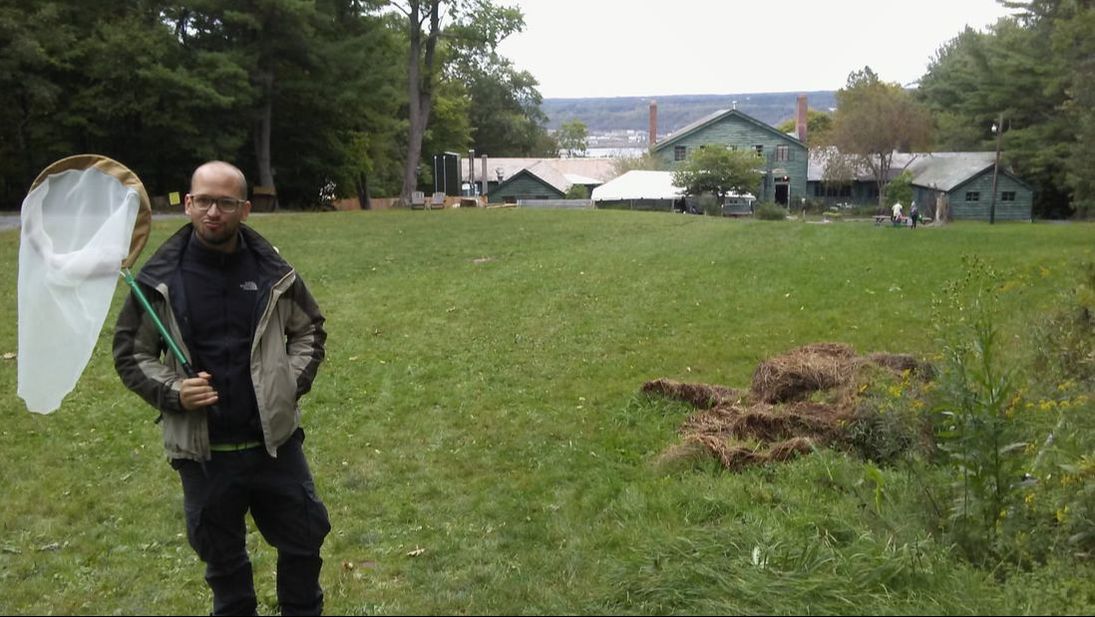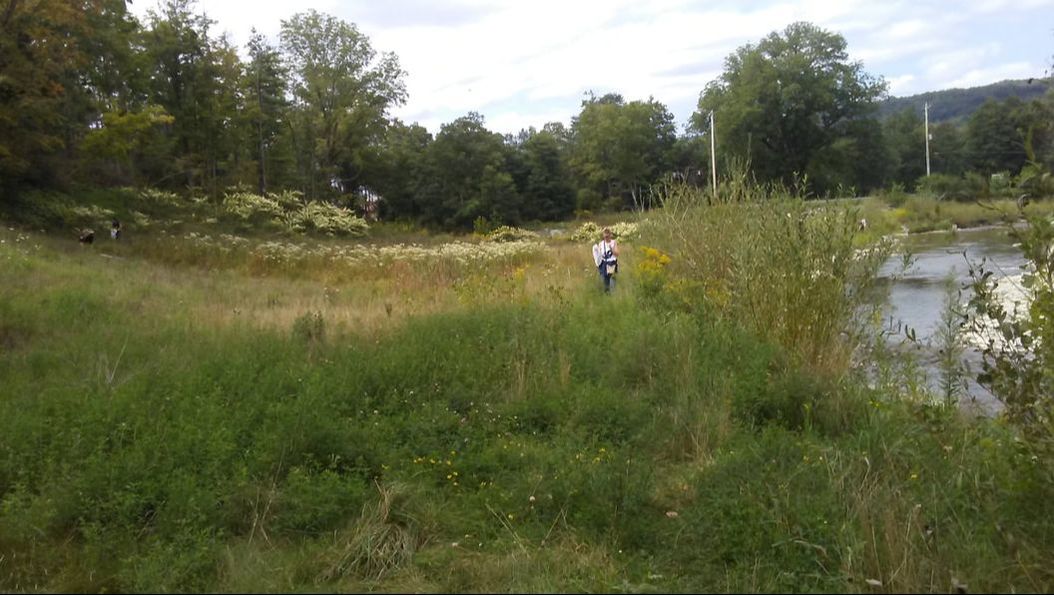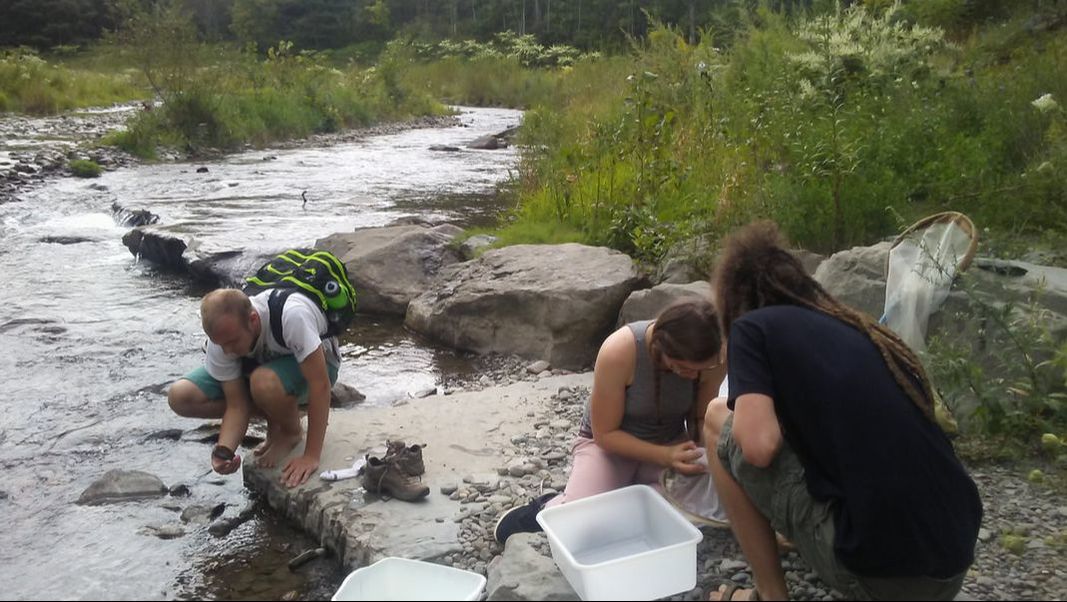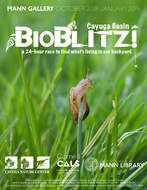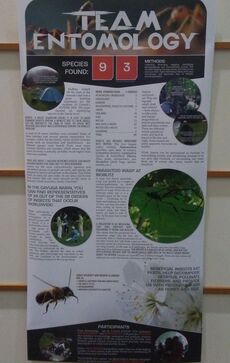The lab component of the course entails collection trips for the first month of the semester, including going on an overnight camping trip. We get out to different types of habitat near Cornell each week. Our class also took part in the first BioBlitz held at Cayuga Nature Center and nearby Smith Woods preserve! For this event we spent 24 hours collecting, observing, identifying, photographing, and documenting insects.
During the first month of class, we are off in our 12-passenger van finding the best bug sites! After that, lab periods are spent learning families of different insect orders, preparing their own insects, and getting practice on the camera lucida (a device that allows a user to view a specimen under a microscope and concurrently project the image on paper, in order to illustrate the specimen). At the end of the semester, the students submitted 100 families for their final collections. The class proved to be a highly motivated and knowledgeable group of students!
During the first month of class, we are off in our 12-passenger van finding the best bug sites! After that, lab periods are spent learning families of different insect orders, preparing their own insects, and getting practice on the camera lucida (a device that allows a user to view a specimen under a microscope and concurrently project the image on paper, in order to illustrate the specimen). At the end of the semester, the students submitted 100 families for their final collections. The class proved to be a highly motivated and knowledgeable group of students!
|
Our Entomology class was one of the participants featured in a Bioblitz exhibit! This panel display at right was in the Mann Library at Cornell, Nov 2018 - Jan 2019.
|
For our field trip, our class took part in a local BioBlitz, which is an 24-hour dash to survey as much biological diversity as possible in an area; people with various areas of expertise come together to do a comprehensive count. For this event we used our skills in collecting, observing, trapping, identifying, photographing, and documenting insects.
The Cayuga Nature Center has had their plant species well-documented, but this is the first time there will be a baseline estimate of other organisms present (some of the other taxonomic groups surveyed included: fungi, microbes, aquatic invertebrates, mammals, birds, lichens, molluscs, spiders, etc.). Participants uploaded records to the biodiversity site, iNaturalist.org. |
Student webpage project: for the final project of the lecture portion of the course, students each designed a species webpage, under the theme "Insects of Cornell". Some students chose to feature insects that they had collected during the semester, and others picked cool bugs that could be found in the region. The students chose a target audience for our site and discussed the basics of website design. In the development process, they went through a peer review of each other’s site design and content and learned a bit about website analytics. Also, we visited the Cornell University Insect Collection (CUIC) to find our individual species in the collections – thanks to Jason Dombroski for his assistance.
ENTOM 3310/3311 course syllabus available at: www.elizabethmurray.us/teaching
